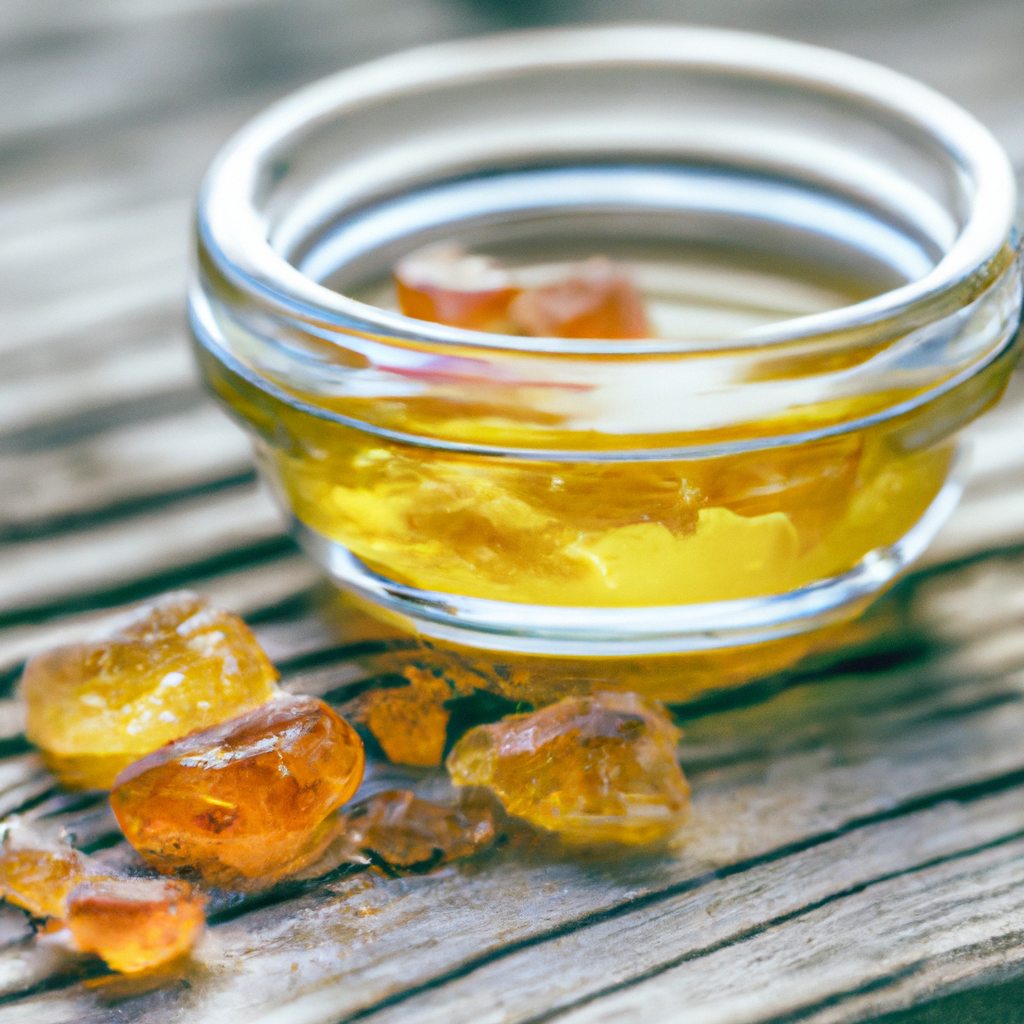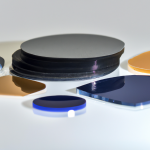-
Table of Contents
“Eco-Friendly Resins: Sustainable Innovation or Just a Trend?”
Eco-friendly resins have gained significant attention in recent years as consumers and industries alike seek sustainable alternatives to traditional materials. With growing concerns over environmental impact and the push for greener practices, these resins promise to reduce carbon footprints and minimize harmful waste. This introduction explores the benefits, challenges, and overall worth of eco-friendly resins, examining whether they truly live up to the hype surrounding their use in various applications, from construction to art and manufacturing.
Environmental Impact of Eco-Friendly Resins
The environmental impact of eco-friendly resins has become a focal point in discussions surrounding sustainable materials, particularly as industries seek alternatives to traditional petroleum-based products. As awareness of climate change and environmental degradation grows, the demand for materials that minimize ecological footprints has surged. Eco-friendly resins, often derived from renewable resources, present a promising solution to this pressing issue. However, understanding their true environmental impact requires a nuanced examination of their production processes, lifecycle, and end-of-life scenarios.
To begin with, the production of eco-friendly resins typically involves the use of bio-based feedstocks, which can significantly reduce reliance on fossil fuels. For instance, many eco-resins are formulated from plant materials such as corn, soy, or sugarcane. This shift not only lessens the carbon emissions associated with extraction and processing of petroleum but also promotes agricultural practices that can be more sustainable. Furthermore, the cultivation of these bio-based materials can contribute to carbon sequestration, as plants absorb carbon dioxide during their growth. Consequently, the initial stages of eco-resin production can present a more favorable environmental profile compared to their conventional counterparts.
Moreover, the manufacturing processes for eco-friendly resins often incorporate greener technologies that minimize waste and energy consumption. Many manufacturers are adopting practices such as closed-loop systems, which recycle solvents and other materials, thereby reducing the overall environmental burden. Additionally, advancements in processing techniques have led to the development of resins that cure at lower temperatures, further decreasing energy usage. These innovations not only enhance the sustainability of eco-resins but also demonstrate a commitment to reducing the ecological impact of manufacturing.
Transitioning from production to usage, eco-friendly resins also offer advantages in terms of performance and safety. Many of these materials are designed to be non-toxic, which is particularly beneficial in applications such as consumer goods and construction. By eliminating harmful chemicals often found in traditional resins, eco-friendly options contribute to healthier indoor environments and reduce the risk of exposure to hazardous substances. This aspect is increasingly important as consumers become more conscious of the materials they bring into their homes and workplaces.
However, it is essential to consider the entire lifecycle of eco-friendly resins, including their end-of-life scenarios. While many eco-resins are designed to be biodegradable or compostable, the actual degradation process can vary significantly based on environmental conditions. In some cases, eco-resins may require specific industrial composting facilities to break down effectively, which may not be readily available in all regions. This limitation raises questions about the practicality of these materials in real-world applications and highlights the need for improved waste management systems to support their sustainable use.
In conclusion, while eco-friendly resins present a compelling alternative to traditional materials, their environmental impact is multifaceted and warrants careful consideration. The benefits of reduced carbon emissions during production, lower toxicity during use, and potential for sustainable sourcing are significant. However, challenges related to their end-of-life management and the need for supportive infrastructure cannot be overlooked. As industries continue to innovate and refine these materials, ongoing research and development will be crucial in maximizing the environmental benefits of eco-friendly resins, ensuring that they live up to the hype and contribute meaningfully to a more sustainable future.
Cost Comparison: Eco-Friendly Resins vs. Traditional Options
As the demand for sustainable materials continues to rise, eco-friendly resins have emerged as a popular alternative to traditional options in various industries, particularly in manufacturing and construction. However, a critical aspect that often influences the decision-making process is the cost comparison between eco-friendly resins and their conventional counterparts. Understanding the financial implications of choosing one over the other is essential for businesses and consumers alike.
To begin with, it is important to recognize that eco-friendly resins, which are typically derived from renewable resources or designed to minimize environmental impact, often come with a higher initial price tag compared to traditional petroleum-based resins. This price difference can be attributed to several factors, including the sourcing of raw materials, production processes, and the scale of manufacturing. For instance, many eco-friendly resins utilize bio-based components, which may be more expensive to cultivate and process than the readily available fossil fuels used in traditional resins. Consequently, businesses may find themselves facing higher upfront costs when opting for eco-friendly alternatives.
However, while the initial investment in eco-friendly resins may be greater, it is crucial to consider the long-term financial benefits that can arise from their use. For example, eco-friendly resins often exhibit superior durability and performance characteristics, which can lead to reduced maintenance and replacement costs over time. In many cases, products made from these sustainable materials can outperform their traditional counterparts, resulting in lower lifecycle costs. Additionally, as consumers increasingly prioritize sustainability, businesses that adopt eco-friendly practices may benefit from enhanced brand loyalty and market differentiation, potentially leading to increased sales and profitability.
Moreover, the growing regulatory landscape surrounding environmental issues cannot be overlooked. Governments worldwide are implementing stricter regulations aimed at reducing carbon footprints and promoting sustainable practices. As a result, companies that invest in eco-friendly resins may find themselves better positioned to comply with these regulations, avoiding potential fines and penalties associated with non-compliance. In this context, the initial cost of eco-friendly resins can be viewed as a strategic investment in future-proofing a business against evolving regulatory requirements.
Furthermore, it is essential to consider the potential for cost reductions as the market for eco-friendly resins matures. As demand for sustainable materials continues to grow, economies of scale may come into play, leading to decreased production costs over time. This trend has already been observed in various sectors, where increased competition and innovation have driven down prices for eco-friendly options. Consequently, businesses that adopt these materials early may not only benefit from their current advantages but also position themselves favorably for future cost savings.
In conclusion, while the initial costs associated with eco-friendly resins may be higher than those of traditional options, a comprehensive analysis reveals that the long-term benefits can outweigh these initial expenditures. Factors such as durability, regulatory compliance, and potential market advantages contribute to a compelling case for the adoption of eco-friendly resins. As the industry continues to evolve, it is likely that the cost dynamics will shift further in favor of sustainable materials. Therefore, businesses and consumers must weigh both the immediate financial implications and the broader environmental and economic benefits when considering whether eco-friendly resins are indeed worth the hype.
Performance and Durability of Eco-Friendly Resins in Various Applications
As the demand for sustainable materials continues to rise, eco-friendly resins have emerged as a popular alternative to traditional petroleum-based options. These resins, often derived from renewable resources, are marketed as environmentally responsible choices that do not compromise on performance or durability. However, the question remains: are eco-friendly resins truly worth the hype, particularly in terms of their performance and durability across various applications?
To begin with, it is essential to understand the composition of eco-friendly resins. Many of these materials are formulated from bio-based sources such as plant oils, starches, or other organic compounds. This shift towards renewable resources not only reduces reliance on fossil fuels but also minimizes the carbon footprint associated with resin production. Nevertheless, the performance of these resins must be scrutinized to determine their viability in practical applications.
In terms of mechanical properties, eco-friendly resins have made significant strides in recent years. For instance, advancements in formulation technology have led to the development of bio-based epoxies and polyurethanes that exhibit comparable strength and flexibility to their conventional counterparts. This is particularly evident in industries such as automotive and aerospace, where high-performance materials are crucial. Manufacturers have reported that eco-friendly resins can withstand similar stress and strain levels, making them suitable for demanding applications.
Moreover, the durability of eco-friendly resins is another critical factor to consider. In environments where exposure to moisture, heat, and chemicals is prevalent, the longevity of materials is paramount. Research indicates that many eco-friendly resins possess excellent resistance to environmental degradation, often outperforming traditional resins in specific scenarios. For example, bio-based polyesters have demonstrated remarkable resistance to UV radiation and hydrolysis, which are common challenges in outdoor applications. This durability not only extends the lifespan of products but also contributes to reduced waste, aligning with the principles of sustainability.
Transitioning to the realm of consumer products, eco-friendly resins have found their place in various applications, from packaging to furniture. In the packaging industry, where biodegradability is increasingly prioritized, bio-based resins offer a compelling solution. These materials can decompose more readily than conventional plastics, thereby reducing landfill contributions. Additionally, in the realm of furniture design, eco-friendly resins are being utilized to create aesthetically pleasing and durable products that appeal to environmentally conscious consumers. The combination of performance and sustainability has led to a growing acceptance of these materials in the marketplace.
However, it is important to acknowledge that not all eco-friendly resins are created equal. Variability in performance can arise from differences in formulation and production processes. Consequently, manufacturers must conduct thorough testing to ensure that their eco-friendly resins meet the necessary performance standards for specific applications. This diligence is crucial, as the success of these materials hinges on their ability to deliver reliable results while adhering to environmental principles.
In conclusion, eco-friendly resins are proving to be a worthy contender in the materials landscape, particularly in terms of performance and durability. As advancements in technology continue to enhance their properties, these resins are increasingly being adopted across various industries. While challenges remain, the potential for eco-friendly resins to provide sustainable solutions without sacrificing quality is a promising development. Ultimately, as consumers and industries alike prioritize sustainability, the hype surrounding eco-friendly resins appears to be well-founded, paving the way for a more environmentally responsible future.
Q&A
1. **Question:** What are eco-friendly resins made from?
**Answer:** Eco-friendly resins are typically made from renewable resources such as plant-based materials, bio-based polymers, or recycled plastics, reducing reliance on petroleum-based products.
2. **Question:** Do eco-friendly resins perform as well as traditional resins?
**Answer:** Many eco-friendly resins offer comparable performance to traditional resins in terms of durability and strength, though specific applications may vary in effectiveness.
3. **Question:** Are eco-friendly resins more expensive than conventional resins?
**Answer:** Eco-friendly resins can be more expensive than conventional resins due to the cost of raw materials and production processes, but prices are gradually decreasing as technology advances and demand increases.Eco-friendly resins are worth the hype as they offer sustainable alternatives to traditional materials, reducing environmental impact through lower toxicity and biodegradability. Their growing popularity reflects a shift towards more responsible manufacturing practices, making them a viable option for consumers and industries aiming to minimize their ecological footprint. However, considerations regarding performance, cost, and availability should be evaluated to determine their overall value in specific applications.



